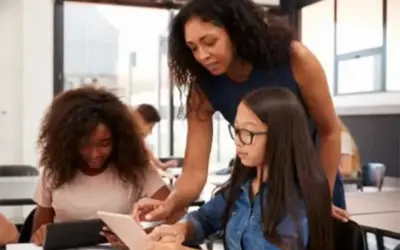The
Bill and Melinda Gates Foundation is investing more than 1 billion dollars over the next four years to “help improve mathematics and outcomes” in U.S. K-12 education. This is the largest investment that the Gates Foundation has made toward mathematics education in its more than two decades of philanthropic giving. Has school mathematics ever had a greater need for an investment like this?
Evidence from the 2022
NAEP mathematics assessment shows us that student mathematics performance has seen its greatest decrease in more than 30 years. I have been teaching high school mathematics at Title I public schools for 20 years and have seen firsthand the impact that the pandemic has had on both the mathematical and socio-emotional development of students. Since 2019 existing gaps in mathematics performance have widened for Black and Latino students, female students and low-income students. This substantial Gates Foundation investment is coming at a time when we need it the most. The Gates Foundation has committed to supporting teachers and reducing these inequities in student outcomes by putting their funding into:
- High-quality digital instructional math materials
- Teacher support in pre-service education and in the classroom
- Instructional coherence in school districts
- Creating stronger alignment between high school and college math course pathways
When it comes to success in high school mathematics and being prepared for college mathematics, algebra is notorious for being the gatekeeper. One set of freely available digital instructional materials that are used help students learn mathematics, including algebra, is Khan Academy. The Gates Foundation provided more than $10 million dollars in funding for this website before the pandemic and has committed an additional $12 million since the beginning of the pandemic. As a regular user of Khan Academy materials with my high school students I have seen improvements in the materials themselves, most notably in the interactive practice items, and have seen how these new materials helped to support the mathematical learning of my students both at home and in my classroom. The website Zearn has a similar story. Before the pandemic The Gates Foundation provided Zearn with $8 million of support and since the pandemic has contributed more than $20 million dollars — specifically toward accelerating student learning in mathematics and to bolster their middle school mathematics materials. I have seen my own elementary- and middle school-aged children benefit from their use of Zearn during the pandemic. I find myself asking: How much further can these two platforms improve? How many more students can they reach? How could access to other high-quality digital instructional materials like CollegeReadyMath benefit students as they learn algebra? This leads me to think about how to support teachers in their instructional practices.
One of the most well-attended sessions at the National Council of Teachers of Mathematics 2022 Annual Meeting held this past September was a session with Peter Liljedahl. Peter spoke about his popular book
Building Thinking Classrooms in Mathematics which serves as a practical guide for teachers and schools to implement concrete research-based structures for increasing student engagement in mathematical thinking in classrooms. I have talked with dozens of teachers across the country (even teachers in my own high school) that have had their classrooms transformed by this work and I have used this work to improve my own teaching. I have also heard many rounds of positive feedback from both administrators and parents about the impact of “thinking classrooms” on student learning and attitudes towards mathematics. There are many reasons why Peter’s work comes highly recommended (see Robert Kaplinksy’s
blog for more information), but I think one of the most powerful things it has going for it is that it comes with a set of practical guidance and practical support for sustained implementation. Teachers can see themselves setting up their classrooms this way. Will the Gates Foundation explore and find ways to support preservice teachers and practicing teachers in using these structures and techniques to transform classrooms? These interventions have been shown to impact classroom instruction in meaningful ways in both the short term and the long term.







